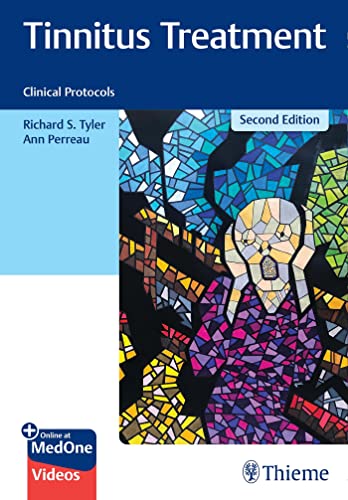

Most ebook files are in PDF format, so you can easily read them using various software such as Foxit Reader or directly on the Google Chrome browser.
Some ebook files are released by publishers in other formats such as .awz, .mobi, .epub, .fb2, etc. You may need to install specific software to read these formats on mobile/PC, such as Calibre.
Please read the tutorial at this link: https://ebookbell.com/faq
We offer FREE conversion to the popular formats you request; however, this may take some time. Therefore, right after payment, please email us, and we will try to provide the service as quickly as possible.
For some exceptional file formats or broken links (if any), please refrain from opening any disputes. Instead, email us first, and we will try to assist within a maximum of 6 hours.
EbookBell Team

4.3
8 reviewsThe quintessential clinical guide for audiologists on tinnitus and hyperacusis patient management
Since publication of the first edition in 2005, new developments have impacted the treatment paradigm for tinnitus, such as sensory meditation and mindfulness. Tinnitus Treatment: Clinical Protocols, Second Edition, by world-renowned tinnitus experts and distinguished authors Richard S. Tyler and Ann Perreau provides comprehensive background information, up-to-date strategies, essential tools, and online supplementary materials grounded in years of clinical experience and research. It fills a gap in graduate education and available materials to empower audiologists to effectively treat patients suffering from bothersome to severely debilitating symptoms associated with tinnitus or hyperacusis.
The textbook includes 15 chapters, starting with three chapters on tinnitus models, treatment approaches, and self-treatment options. The next three chapters summarize counseling approaches for audiologists and psychologists, including introduction of the three-track psychological counseling program for managing tinnitus. Chapters 7 and 8 discuss the use of hearing aids in patients with hearing loss-related tinnitus and sound therapy using wearable devices. Chapter 9 covers smartphone apps for tinnitus assessment, management, and education and wellness, including discussion of limitations. The last six chapters provide guidance on tinnitus management topics including treating children, implementing outcome measures, hyperacusis treatment, and future directions.
Key Features
New relaxation/distraction tactics including meditation, mindfulness, guided imagery, biofeedback, progressive muscle relaxation, art and music therapy, exercise, and exploration of new hobbies
Treatment guidance for patients with tinnitus associated with Meniere's disease, vestibular schwannoma, unilateral sudden sensorineural hearing loss, and middle ear myoclonus
Discussion and research-based evidence covering